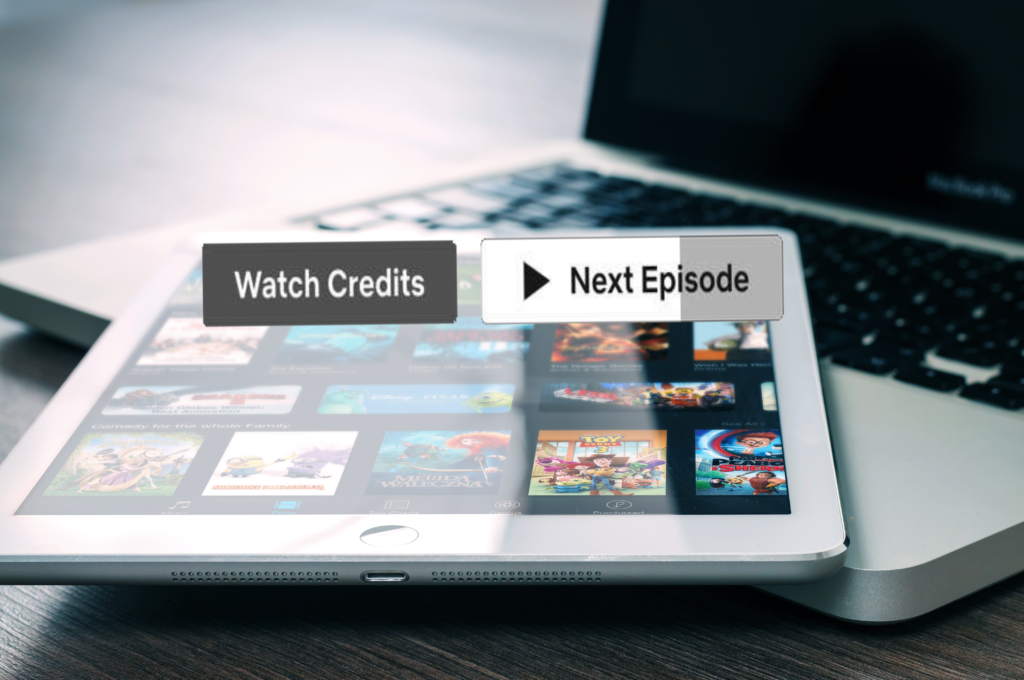
The structure of our media system means that people also come into contact with news – and that’s a good thing. However, the move away from linear media consumption is shaking up this basic contact with news.
When it was still possible, before the pandemic, I spent a two-week holiday in Florida with my family. We drove a few hundred kilometres along highways, exploring towns, watching out for alligators and shells. On one of those long drives, the minute hand on the dashboard clock approached twelve. And I began searching for a station on our rental car’s FM radio that broadcast news on the hour. I searched and searched, the minutes passed. When it was already a minute or two past the hour, I gave up: I couldn’t find a station among the multitude of pop, country and talk radios around Miami that would reliably provide me with news on the hour. The music just kept playing. This irritated me.
Obviously, linear media are far less regulated in the USA than here in Germany: In this country, I’m used to hearing news on the hour – and finding it when searching the frequency scale. Almost all stations offer news, not only the public broadcasters. State media authorities tie their frequency allocations for commercial stations to programme standards. This also means that terrestrial or cable stations are expected to offer news if they want to get hold of a frequency.
News avoidance requires deliberate action
And so, conversely, it is also damn hard not to listen to the news in Germany: If you listen to linear radio in the car on the way to work or in the bathroom in the morning while taking a shower, you are bound to stumble across news. Like the dead bear’s head in the New Year’s Eve hit “Dinner for One” (funnily only popular in Germany whereas it´s presented by British comedian Freddie Frinton): the news is always in the way, every hour on the hour, and if you don’t take a diversion, you stumble.
This also means that if you don’t want to listen to the news, you have to consciously switch off. The choice is between the few stations that broadcast their news five minutes before the hour. But even these stations broadcast news. If you don’t want to hear information, you have to consciously avoid it, otherwise it will trickle into your ears like music, sweepstakes and advertising before and after. News avoidance requires deliberate, active action. The passive media user is trapped in the linear course of the day.
This is no coincidence, it is by design: When politicians drafted our broadcasting regulations, they deliberately opted for the coexistence of information and entertainment. In the State Media Treaty (which is is sadly lagging behind current developments such as digitalization), the term “full programme service” is used. And even in private complete or “full programmes”, according to §25, “the significant political, ideological and social forces and groups (…) must have an appropriate say.” The goal is diversity of opinion, and that cannot be achieved with only music.
Dream ratings thanks to football
The coexistence of entertainment and information works. Because when “Tagesthemen” and “heute journal” broadcast shortened editions during the half-time break for the European Football Championship or the World Cup, this is no coincidence: the heads of the newsrooms look forward to these ratings boosters. And the editorial departments adjust their planning and try to have the particularly large and heterogeneous audience in mind when selecting news topics. After all, the millions of football fans who have gathered in front of their televisions stay tuned – despite the pee break – even during half-time.
News reaches dream ratings in this way, up to 24 million people watch such half-time news. Maybe some get a beer, maybe others chat – but in essence, these football fans also “stumble” across news en masse. And that’s a good thing, because it contributes to information and opinion-forming. Only in this way can news become a small-talk topic on the garden fence or party talk at football night – especially if it is produced well, i.e. in a way that is suitable for the target group.
From my point of view, we have done the right thing in Germany (and in other European countries): our media regulation (also) leads to news being part of the daily media menu, unlike in the USA, where National Public Radio (NPR) with its allied regional stations tends to broadcast at the fringes of society, while the middle is often not or only insufficiently reached by news. However, linear media use is also steadily declining in Germany. And with it, the chance that people in Germany will stumble across news is also decreasing. The ability to form informed opinions is in danger – and with it our democratic system.
“Binge Watching” as a Business Model
The long-term study “Massenkommunikation” (Mass Communication) by ARD and ZDF, which has been examining media use in Germany since the 1960s, already shows that in the age group of 14 to 29-year-olds, 80 percent listen to their music via streaming platforms such as YouTube and Spotify. Only 68 percent also use radio – and this trend line shows downward. There are many such observations and studies – media use is shifting to non-linear channels at the expense of linear broadcasting.
In my view, this development poses many challenges that media policy and society should address. One has to do with people “stumbling” over news in yesterday’s media world: Because streaming services like Spotify, YouTube, Netflix or Amazon Prime do everything they can to ensure that exactly that does not happen.
“Binge watching” is the business model of the new media giants, users are supposed to stay tuned for as long as possible. It’s not for nothing that the countdown at the end of a series episode is rarely enough to press “stop” on the remote control or mobile phone in time: “The next episode starts in 15 seconds.” Streaming services are doing everything they can to make media use as uninterrupted as possible, longer and longer and longer.
The goal: no one should stumble. With Netflix, Spotify & Co. it takes an active user to stop streaming the same series over and over again. And it takes the active user to go in search of news.
This is the decisive paradigm shift in media use: in the linear media world, those who wanted to avoid news had to take action: Act to not consume news. In the non-linear world, the active user is needed to consume news.
Diversity of opinion and freedom of information at risk
If we approach this change through the eyes of those who created our media order to ensure diversity of opinion, then regulation must urgently follow suit at this point. At the time, media policy deliberately focused on full (complete) programmes in order to reach as many people as possible with information and diverse opinions. And no one will disagree with the statement that diversity of opinion and freedom of information are more in danger today than ever before.
Incidentally, those who broadcast on linear channels in a strictly regulated framework, whether public or commercial, have a serious strategic disadvantage: they have to meet the requirements of a full programme, whereas Netflix can deliver individual media content to German households that is, in case of doubt, completely free of information. RTL and ZDF must regularly broadcast news (and finance its production), while Amazon Prime does not have to fulfil this obligation.
Some may object that Netflix also produces high-quality documentaries and Spotify sophisticated podcasts. That is true. But if you want to watch them, you have to actively search for them. This is the subtle but decisive difference.
The activists of the “Humane Technology” movement demand that the autoplay of the next episode be switched off when streaming series. Against media addiction and “binge watching”: Humane technology means not providing for every possible temptation in the design, but avoiding it as much as possible.
The activists of an opinion-diverse society should accordingly demand that non-linear media actively offer news and information – a kind of autoplay for the daily news. Users must also be able to stumble upon non-linear platforms. They have to actively decide and retrieve their remote control from the sofa cushions, take their mobile phones off the charger and press “I don’t want to watch news” to avoid information. Just as they have to actively switch on linear channels if they don’t want news.
It would be conceivable in my opinion that news content financed by a licence fees would be available to all providers. Then Netflix, Spotify & Co. – even if they undoubtedly could in view of their commercial success – would not have to get involved in the expensive production of news and information. But these are details. What is important is the obligatory, regular offer: “Here’s your information.” Or: “Here comes the news!” In a figurative sense, the bear skins of “Dinner for One” have to be rolled out on the floors of the non-linear world, along with their heads: so that we users, in the role of the butler, keep stumbling across journalistic news and information in the best sense.
In essence, media regulation must ensure that news continues to find its users. In this direction. And that users don’t have to actively search for their news.
Time is pressing. Because already today we have social networks like Facebook and Twitter operating worldwide, following exclusively commercial decisions. How they influence elections and other democratic processes has become clear at the latest since the riot at the US Capitol. If linear media, in which information still has its place, simultaneously lose importance and regulation does not give them a place in non-linear media, our democracy will have a hard time.
This article was written in cooperation with Vocer and journalist. The article will appear in the book “How we make journalism more resilient”. The editors are Vocer co-founder Stephan Weichert and journalist editor-in-chief Matthias Daniel.



